No products in the cart.
The Arming Sword (#1313)
Wallace Collection, England, A.460 French, c. 1375-1400, Type type XVIII sword.
By the 14th C. the classical Medieval Knight’s sword took shape in the Arming Sword. Short for close quarter combat, light, and well balanced with a sharp taper and reinforced tip, the Arming Sword proved to be a devastating weapon again the developing full plated armor of the time. The heavily tapered blade gave the sword devastating stabbing force against plated armor, while retaining its destructive cutting edge. The sword came to be known as the “Arming Sword” because it formed part of the Medieval Knight’s standard equipment. By the 14th C, the Arming Sword became the weapon of choice for many knights of the English, French and German empires.
Length : 39”
Handle Length: 4 ½”
Blade Length: 32”
Blade Width: 2 1/16”
Crossguard Length: 8 5/8”
Guard Depth: 7/8”
Handle Circumference: 4 ¼”
Weight: 3lbs
P.O.B.: 4 ¾”
USD570.00 – USD700.00Price range: USD570.00 through USD700.00
SKU: N/A
Categories: Arming Swords, Medieval Swords, One Handed Sword, Swords
Wallace Collection, England, A.460 French, c. 1375-1400, Type type XVIII sword.
By the 14th C. the classical Medieval Knight’s sword took shape in the Arming Sword. Short for close quarter combat, light, and well balanced with a sharp taper and reinforced tip, the Arming Sword proved to be a devastating weapon again the developing full plated armor of the time. The heavily tapered and narrowing blade gave the sword devastating stabbing force against plated armor, while retaining its destructive cutting edge. The sword came to be known as the “Arming Sword” because it formed part of the Medieval Knight’s standard equipment. By the 14th C, the Arming Sword became the weapon of choice for many knights of the English, French and German empires.
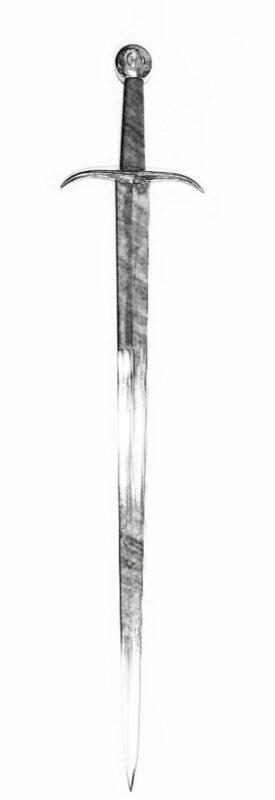 Classified as a type XV in Ewart Oakeshott classification, the Arming Sword is a one-handed medieval weapon. Although popular during the 14th and 15th C, some sources suggest that type XV swords made their appearance as early as the latter part of the 13th century. During this period, sword geometry evolved to balance thrusting with the cutting geometry of previous periods. It was during this period that blade geometry began morphing more quickly as a response to the technological advances of the full plate armor of the medieval knights.
Classified as a type XV in Ewart Oakeshott classification, the Arming Sword is a one-handed medieval weapon. Although popular during the 14th and 15th C, some sources suggest that type XV swords made their appearance as early as the latter part of the 13th century. During this period, sword geometry evolved to balance thrusting with the cutting geometry of previous periods. It was during this period that blade geometry began morphing more quickly as a response to the technological advances of the full plate armor of the medieval knights.
The blade is stiff and has a four-sided triangle-shape profile, with a diamond cross section, acute point and no fuller. The guard is designed for blocking opposing blows as well as to be used as an extension of the sword. The guard’s sharp tip was designed to thrust through the visor and other openings in the armor in close quarter combat.
Such blades were popular from the 14th to the 15th centuries among the nobility for their resilience, light weight, dexterity and devastating thrusting capabilities. Due to their light weight and potent thrusting abilities, this powerful and effective sword went on to become the prevailing medieval weapon of the 15th C.
Over the years of doing research in museums around the globe, we have seen numerous variations of arming swords. One of the most popular being the one on display at the Wallace collection (A460) , procured from the Comte de Nieuwerkerke (count of Nieuwekerke).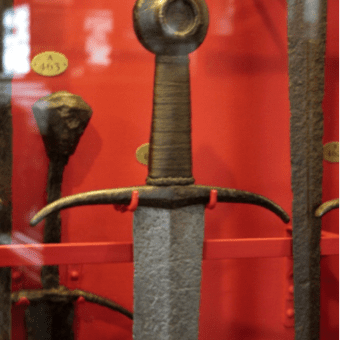
Being one of the most simple designs among single hand medieval weapons, the arming sword is elegant and unique; Simple, yet sophisticated. It’s clean lines and elegance made it a prime sword for us to replicate at our shop.
The hollow ground blade made this sword particularly interesting for our staff. The shape of the hollow ground blade is paralleled on the geometry of the pommel and downward slopping guard, preserving a perfect sense of geometry and proportionality among its’ individual parts.
Simple, yet refined, the guard had to be carefully ground to preserve crisp edges, clearly defining it’s sectional frame.
Our creation of the arming sword is forged with 5160 High Carbon Steel. The full tang construction is peened over the pommel. To see a detailed video of our forge.
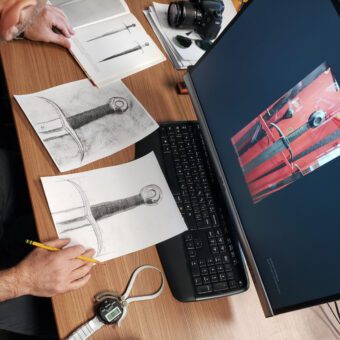 Arming Swords were exclusively owned by the elite aristocracy, who were the medieval knight of the time. Their use was so common among the knights of the German, French and English forces that it came to be known as the quintessential sword of the medieval knight of the 14th and 15th century.
Arming Swords were exclusively owned by the elite aristocracy, who were the medieval knight of the time. Their use was so common among the knights of the German, French and English forces that it came to be known as the quintessential sword of the medieval knight of the 14th and 15th century.
Being specifically designed for close quarter combat, the Arming Sword handles beautifully. It is a very responsive sword that feels “alive” and light in the hand. Easily wieldable even in novice hands, the Arming Sword’s characteristics make it a medieval weapon of choice for all collectors. The sword is perfectly balance for swift movement and powerful delivery in both cut and thrust motions.
While historically made for the noble elites, the Arming Sword is perfect for beginner and advanced students of the sword. Being perfectly balanced and relatively short, the Arming Sword has become a favorite among beginners seeking to perfect their form.
The diamond cross-section of the blade results in a thick spine that sharply tapers to the edge, providing good stiffness without sacrificing structural integrity. This makes the arming sword light enough in the hand to be wielded easily, yet resilient enough to withstand actual use in combat.
The Arming Sword is a one-handed medieval weapon that gives little resistance. It handles very well with one hand use, permitting the use of a shield, for students of mode I-33, on the opposite hand. Arming Swords are known for being manageable and powerful with excellent cut-and-thrust ability.
The Arming Sword has a very deep tapering, giving the sword an excellent piercing ability against chain mail and plate armor. The deadly thrusting tip can penetrate 18g armor, but is mainly used to thrust through opening under the armpits, gorgets, pauldrons, and other openings in the armor.
While primarily a thrusting weapon, the stiff blade of the arming sword makes it an excellent cutter against pumpkins, water bottles and tatami mats.
Historically, the Arming Sword could be used with effectiveness against both armored and unarmored opponents. This was by design, as the wielder would face both armored knights as well as the lightly-armored infantry. As a result, the Arming Sword was designed to be a versatile weapon that would be able to suit a variety of combat situations.
This version of the knightly Arming Sword is paired with a classic wheel pommel, one of the more simple historical designs. This style of pommel can be seen on examples well before the 14th C. While the design may be basic, it is anything but uninspired; a wheel pommel not only balances the blade and improves the handling, but can be used as a weapon in its own right. A crushing blow from the heavy round pommel of the Arming Sword could take an enemy by surprise, injuring them or knocking a helmet askew. The elegant curved guard is another classic, representative of several surviving examples of medieval Arming Swords.
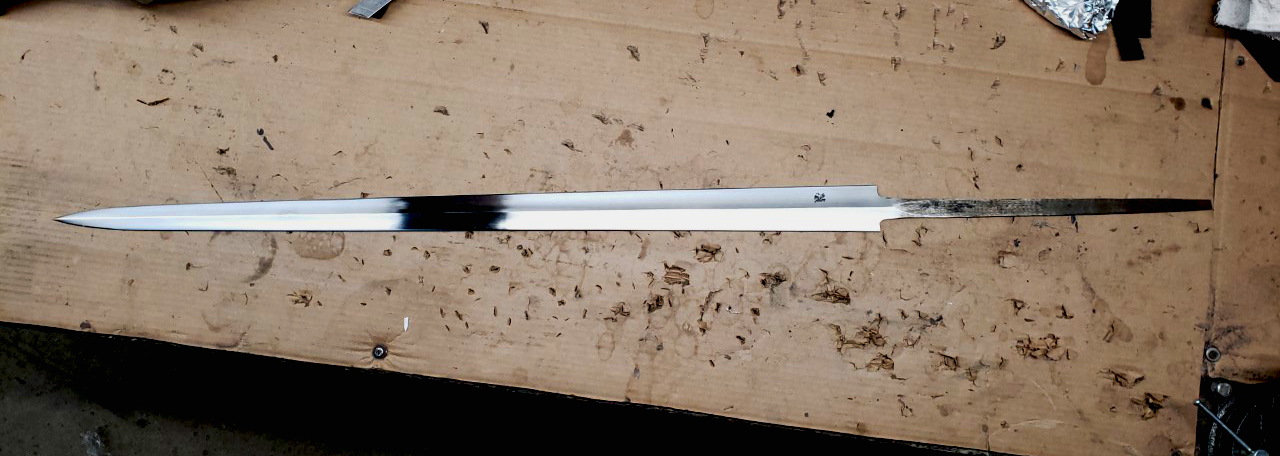
The Arming Sword is truly a delight of a medieval weapon. Easily wield-able and very responsive, it provides both novice and experienced users a very good performing battle ready weapon which will easily cut and thrust through most targets set against it. The Arming Sword is faithfully crafted from the original at the Wallace Collection (inventory .A460). Skillfully crafted with the same dimensions as the original the sword is responsive, exceptionally well balanced, and delivers forceful blows. The Arming Sword is finely crafted, classically styled, and a must even for the most discriminating collector!
3 reviews for The Arming Sword (#1313)
Add a review Cancel reply
This site uses Akismet to reduce spam. Learn how your comment data is processed.
Related products
Medieval Swords
Rated 5 out of 5
USD640.00 – USD800.00Price range: USD640.00 through USD800.00Medieval Swords
USD605.00 – USD735.00Price range: USD605.00 through USD735.00
This product has multiple variants. The options may be chosen on the product page Longsword
Rated 4.57 out of 5
USD655.00 – USD815.00Price range: USD655.00 through USD815.00Fantasy Swords
USD520.00 – USD620.00Price range: USD520.00 through USD620.00
This product has multiple variants. The options may be chosen on the product page Arming Swords
Rated 5 out of 5
USD565.00 – USD720.00Price range: USD565.00 through USD720.00Medieval Swords
Rated 5 out of 5
USD465.00 – USD495.00Price range: USD465.00 through USD495.00Longsword
Rated 5 out of 5
USD640.00 – USD770.00Price range: USD640.00 through USD770.00Medieval Swords
Rated 5 out of 5
USD625.00 – USD755.00Price range: USD625.00 through USD755.00Medieval Swords
Rated 4.75 out of 5
USD605.00 – USD910.00Price range: USD605.00 through USD910.00Medieval Swords
Rated 5 out of 5
USD625.00 – USD900.00Price range: USD625.00 through USD900.00Medieval Swords
Rated 5 out of 5
USD560.00 – USD865.00Price range: USD560.00 through USD865.00Medieval Swords
Rated 5 out of 5
USD645.00 – USD800.00Price range: USD645.00 through USD800.00



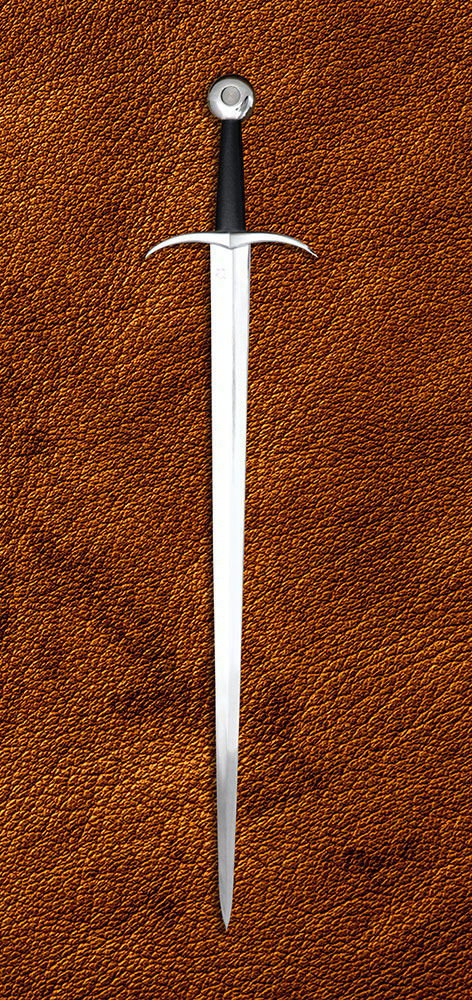
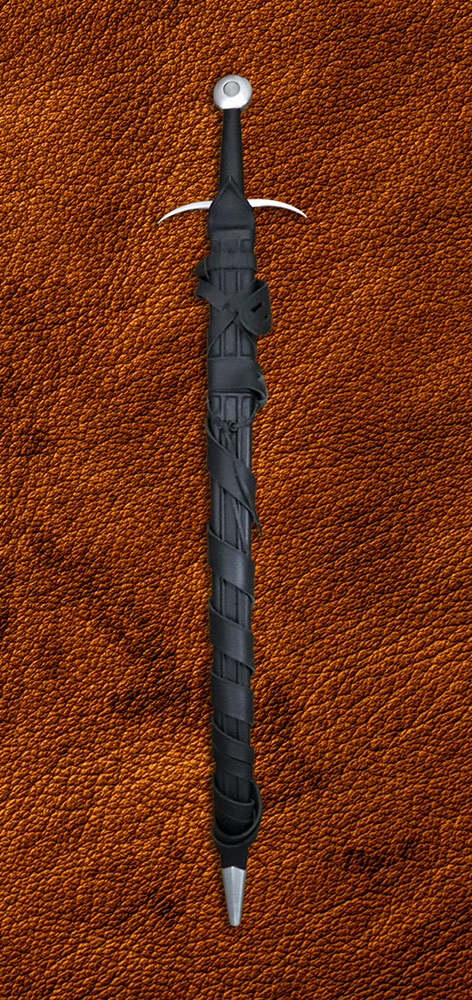
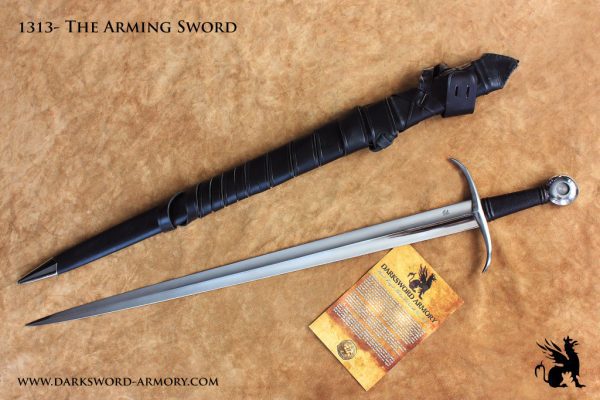
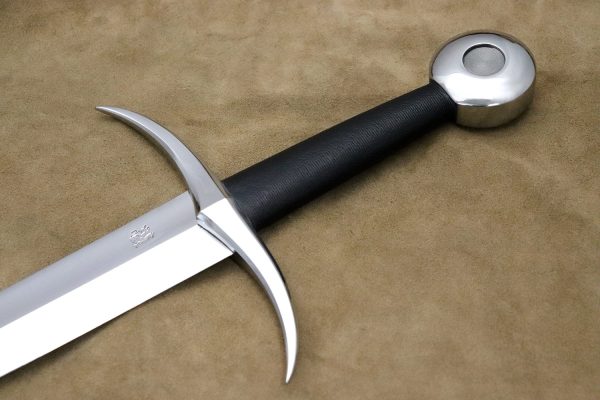
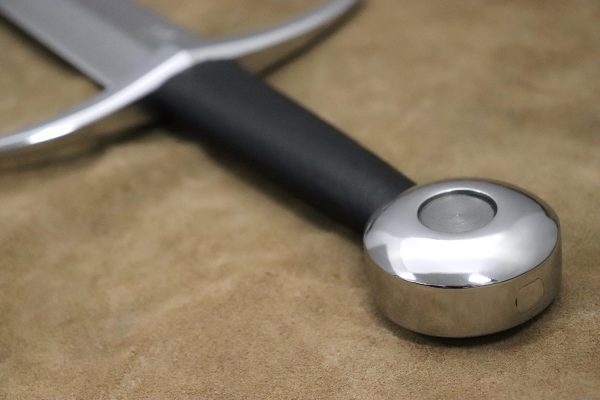
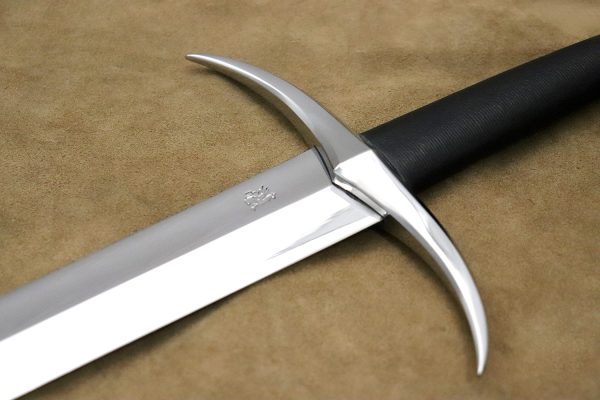
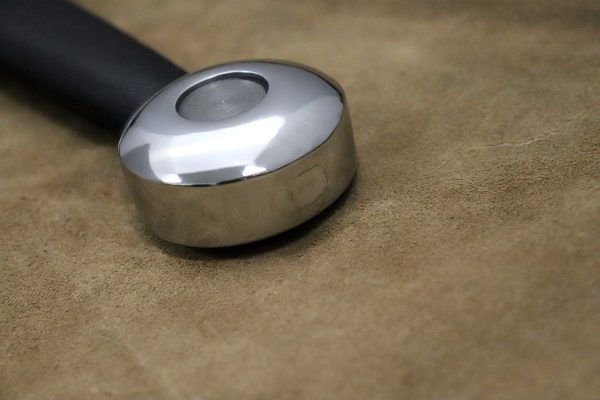

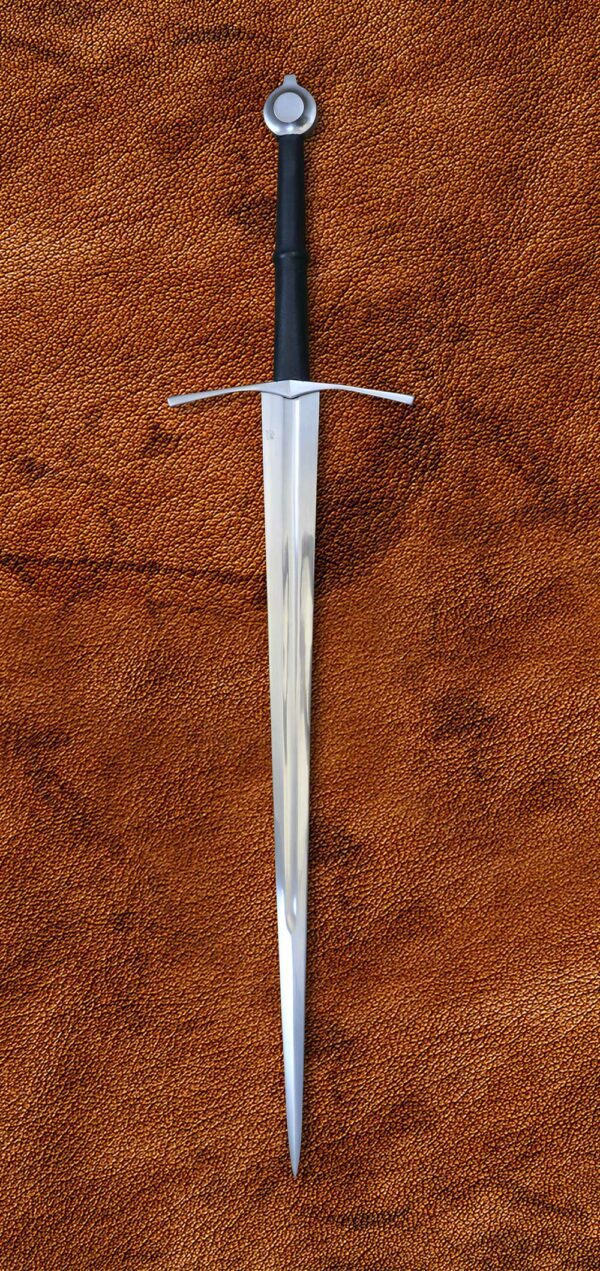
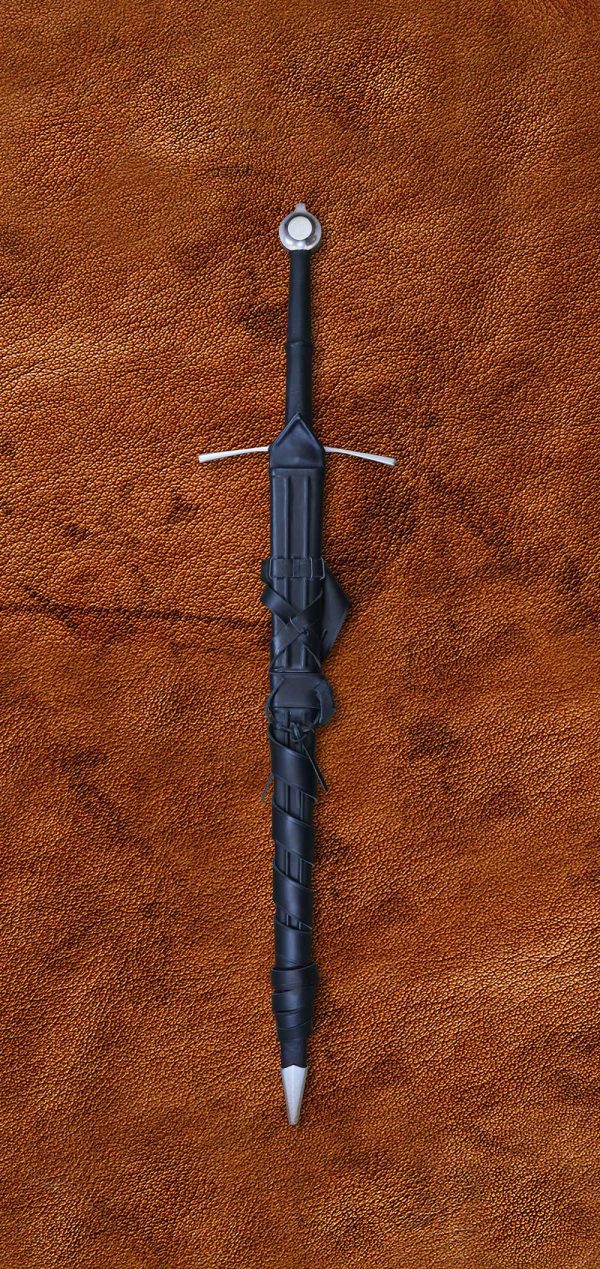
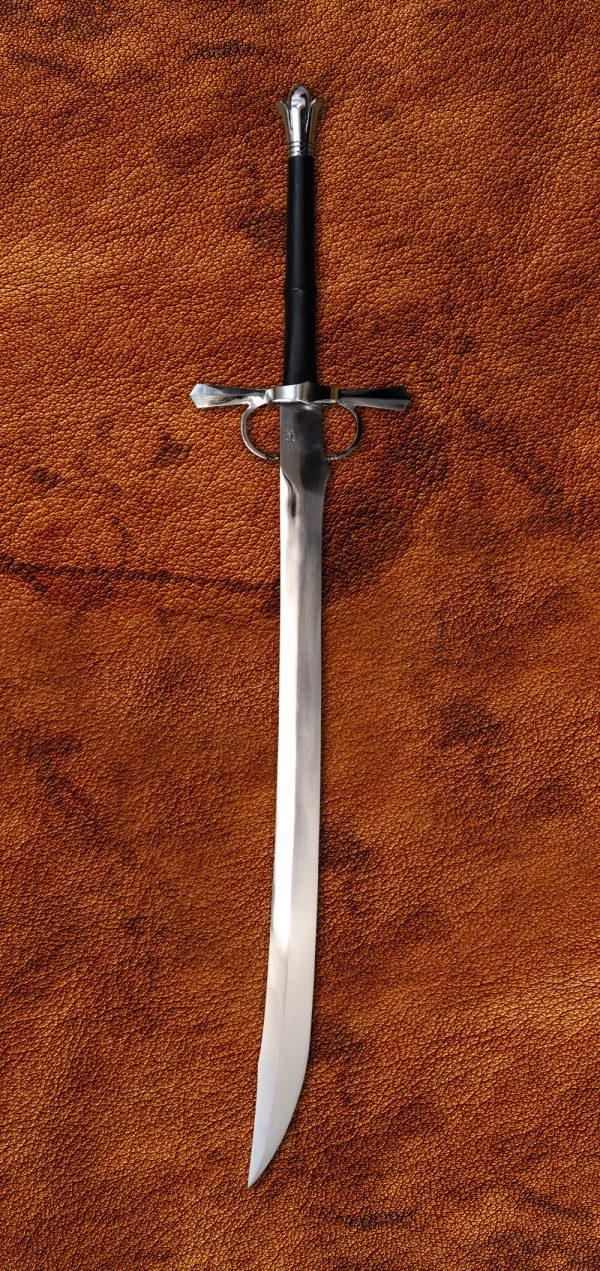
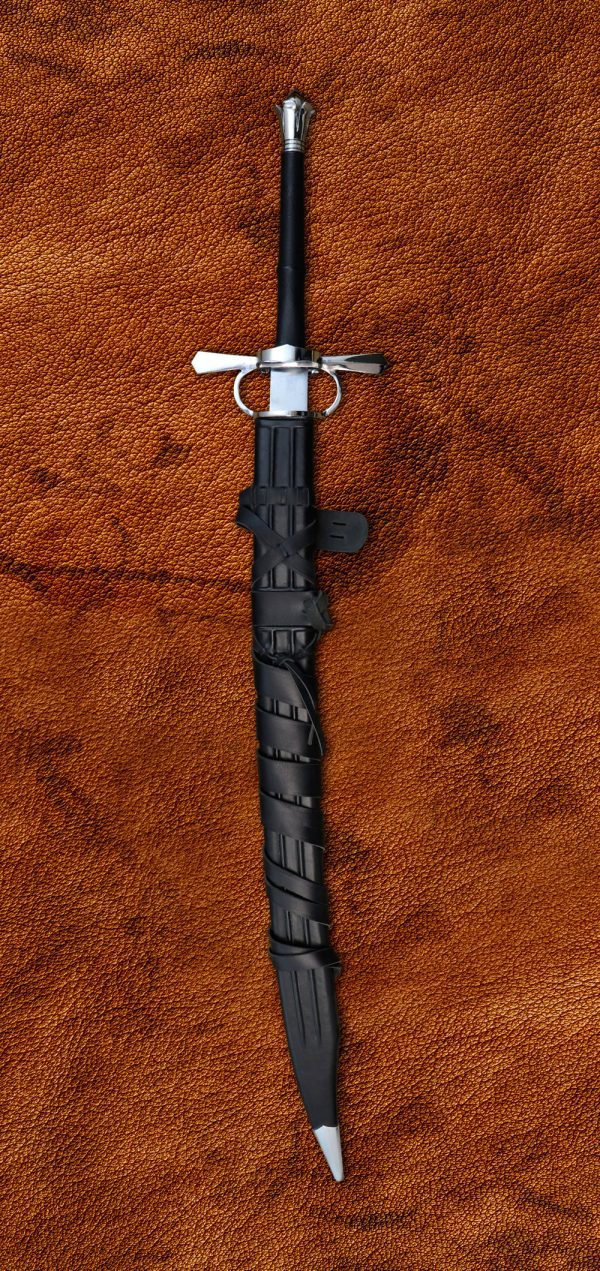
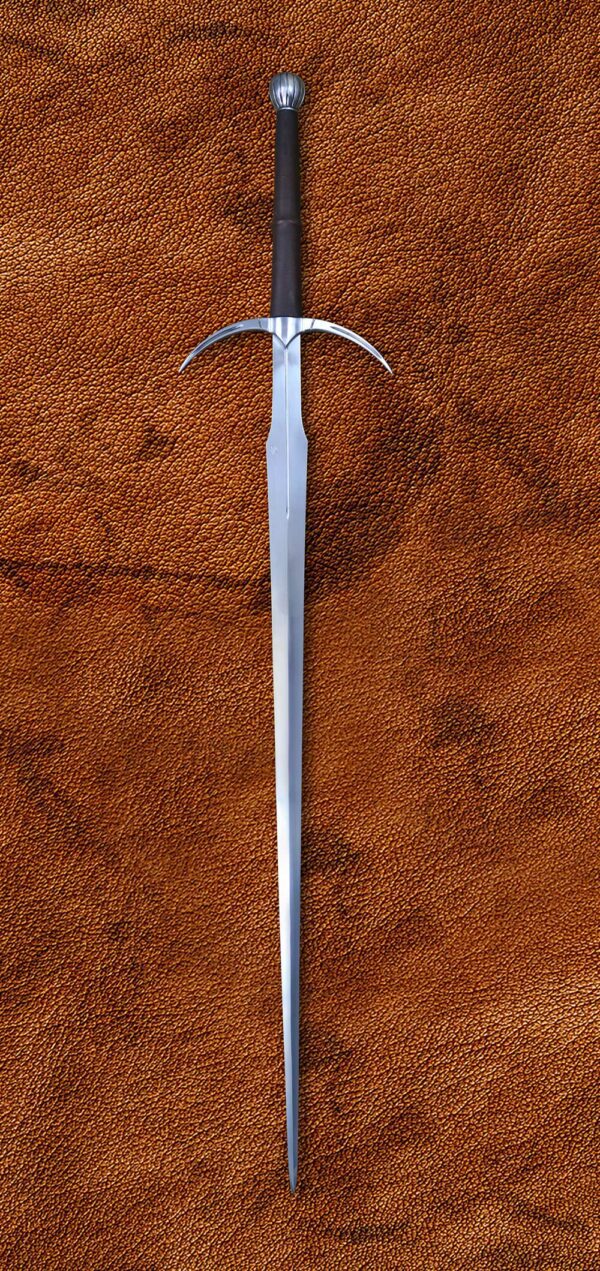
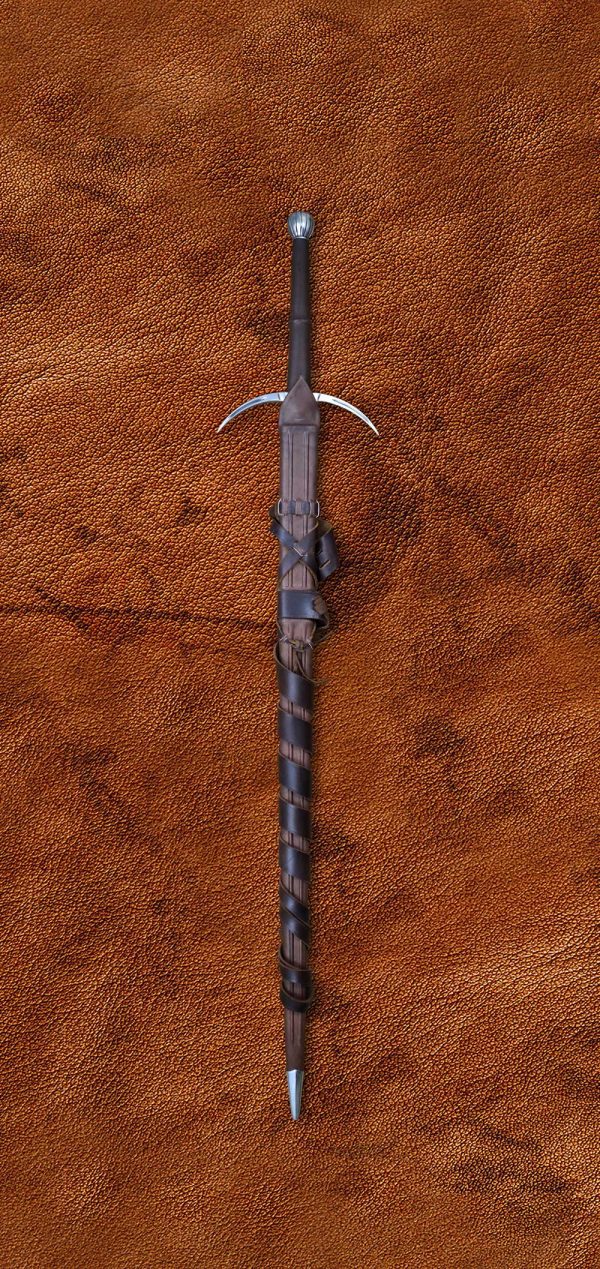
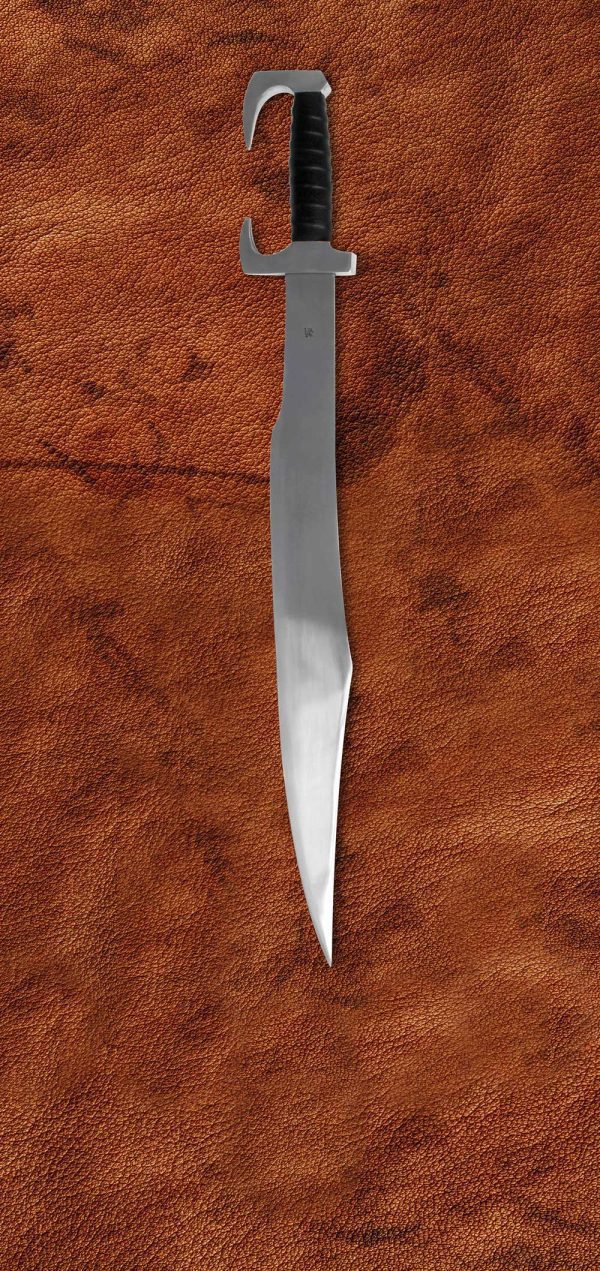
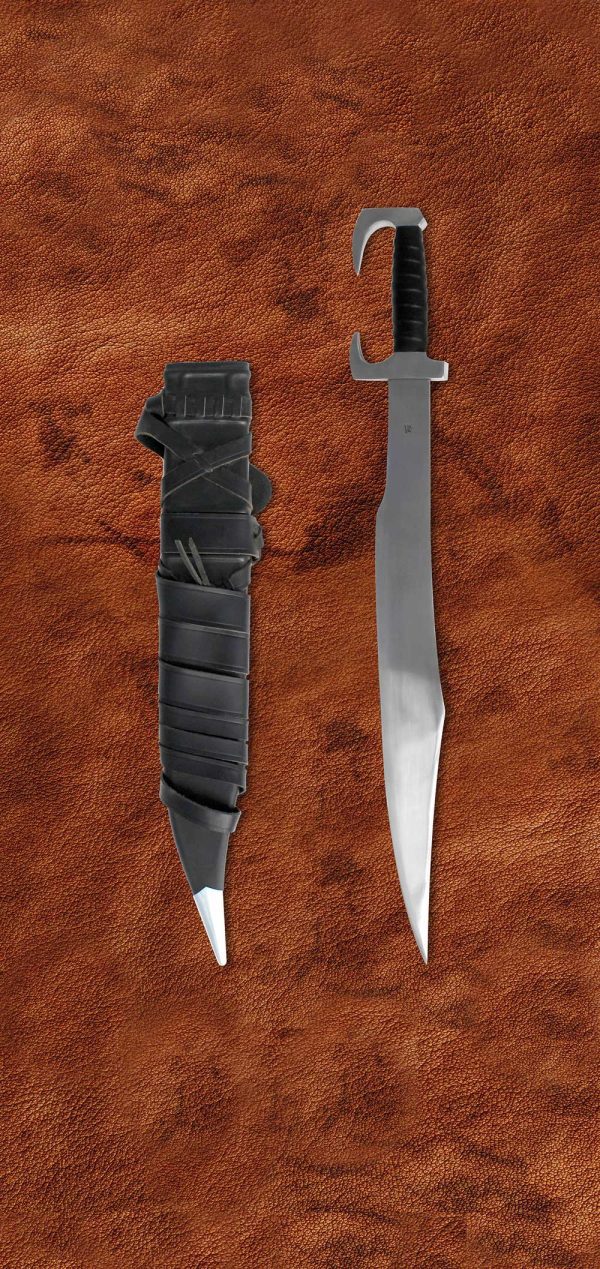
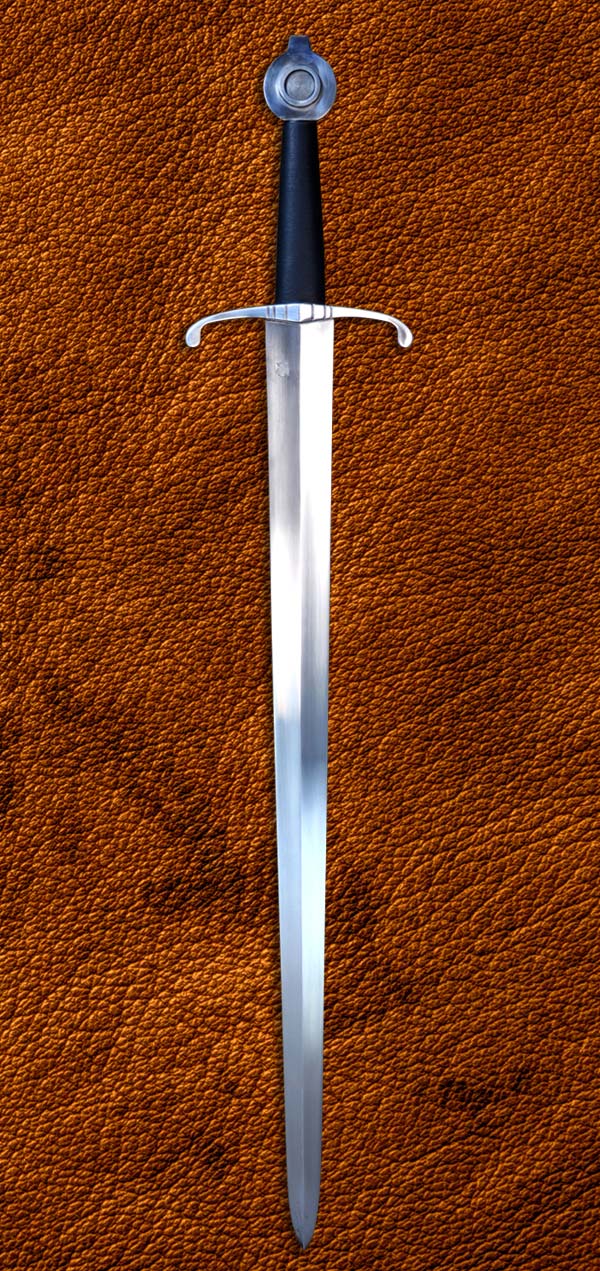
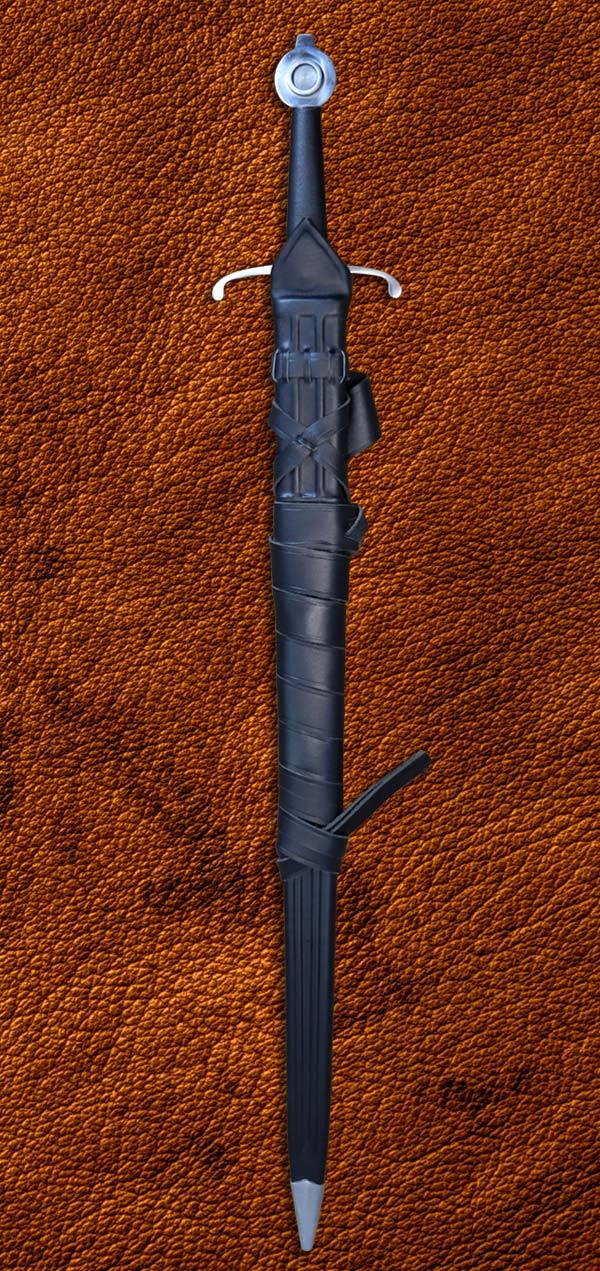
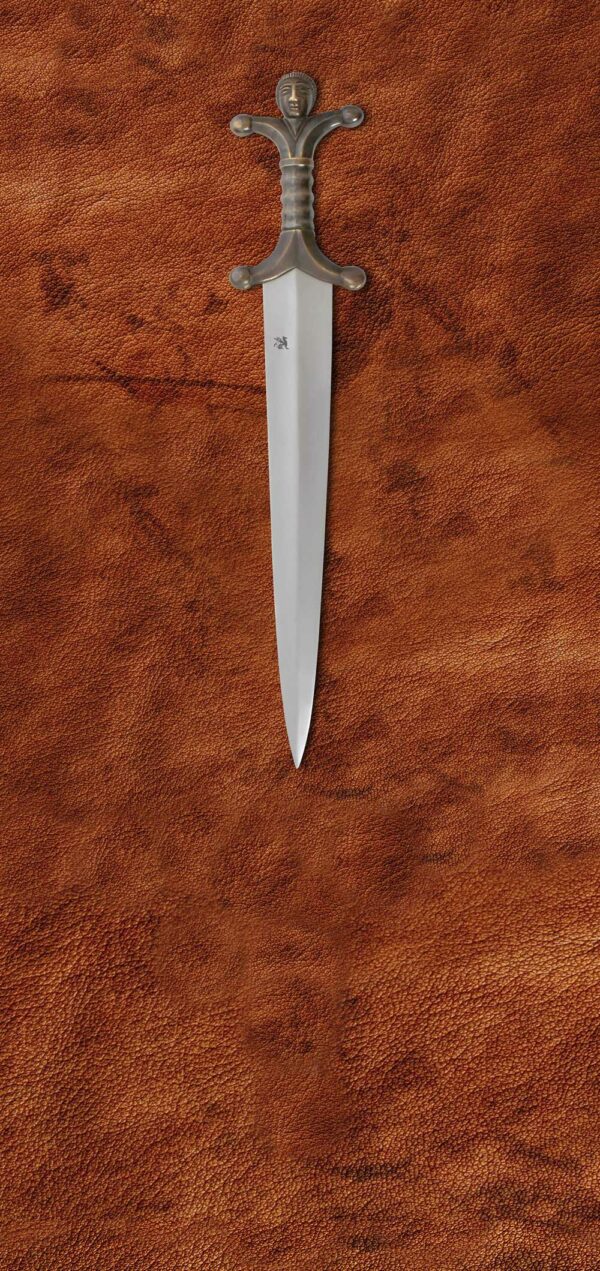
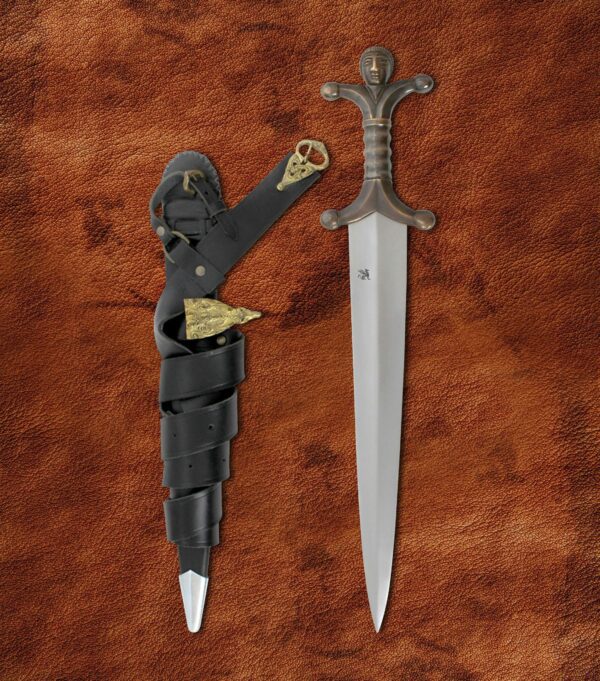
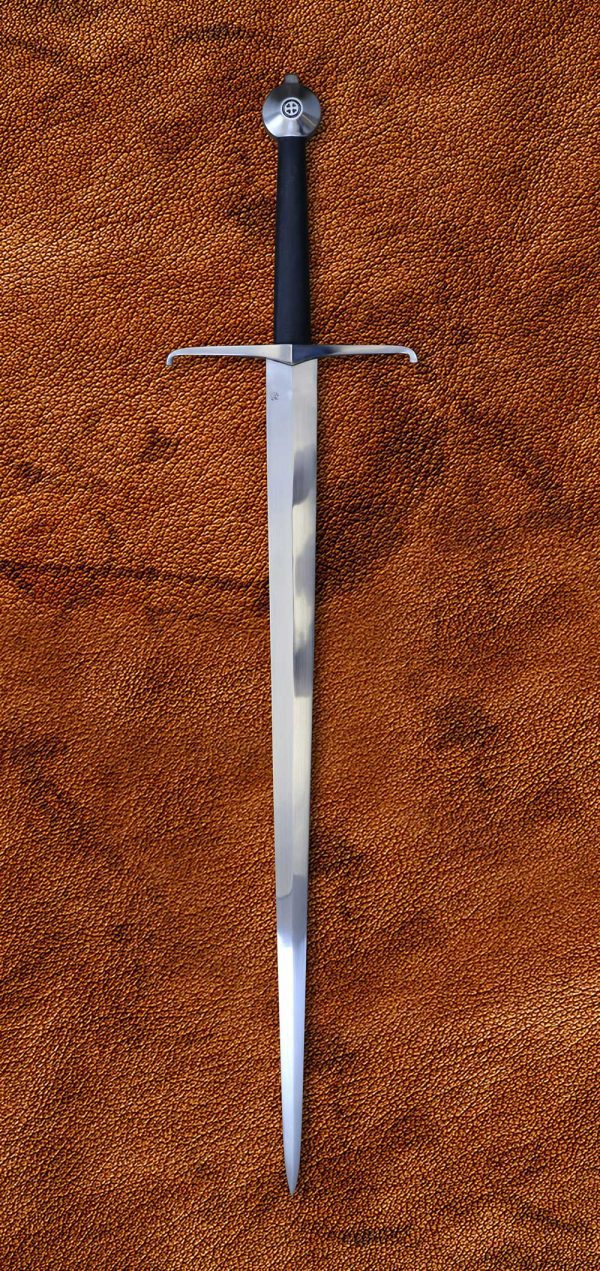
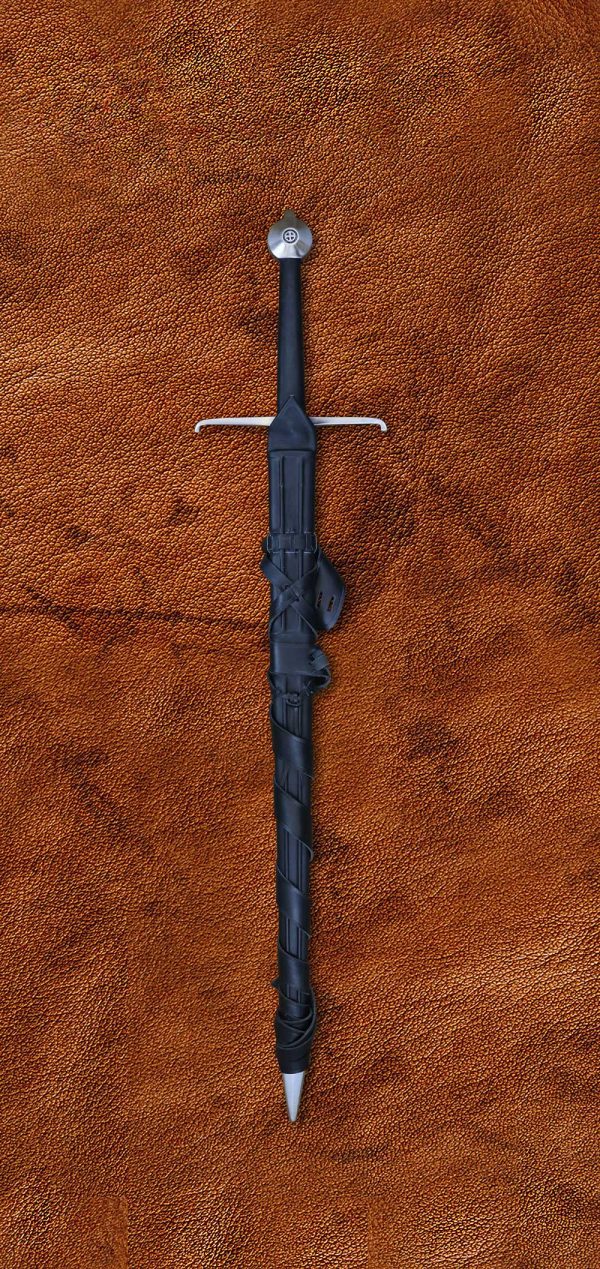
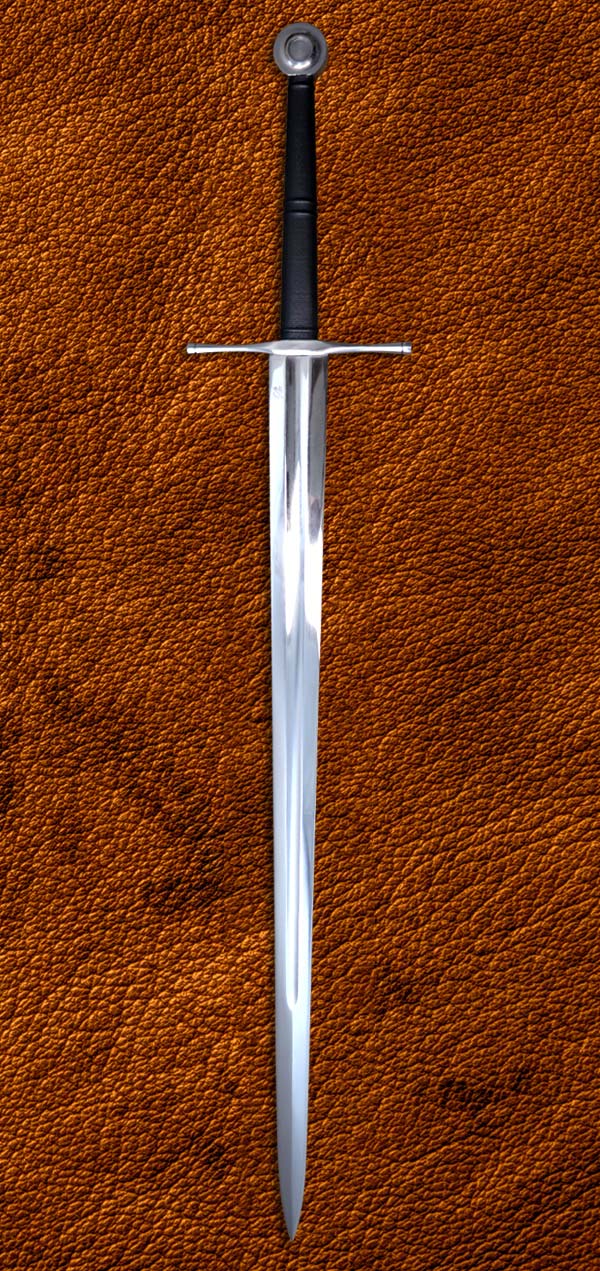
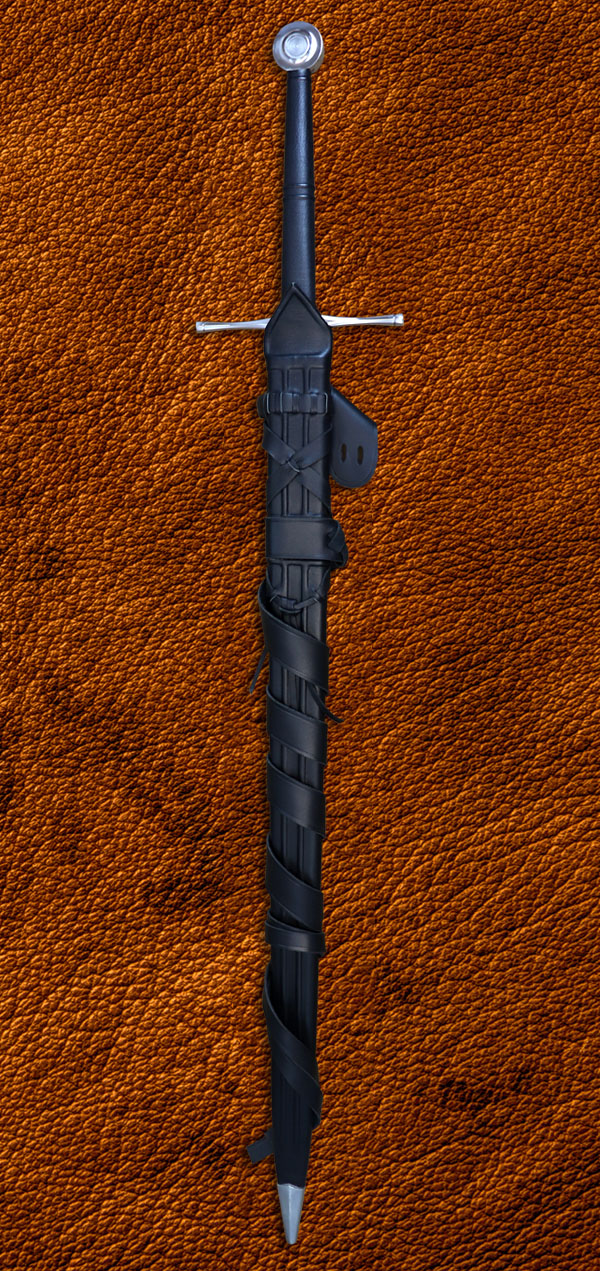
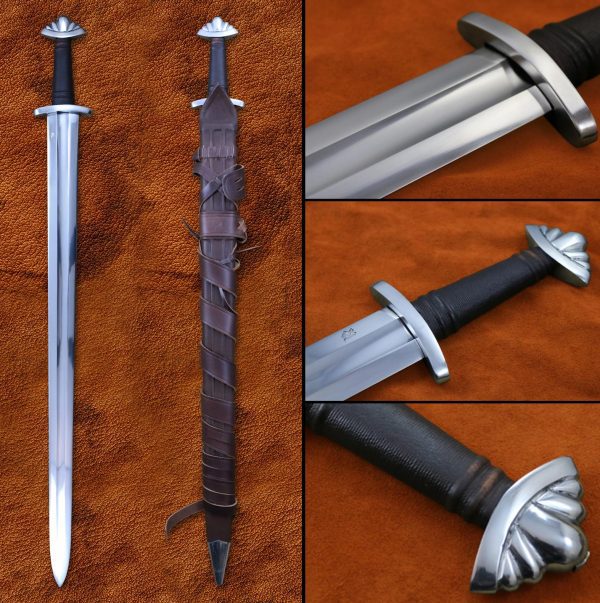
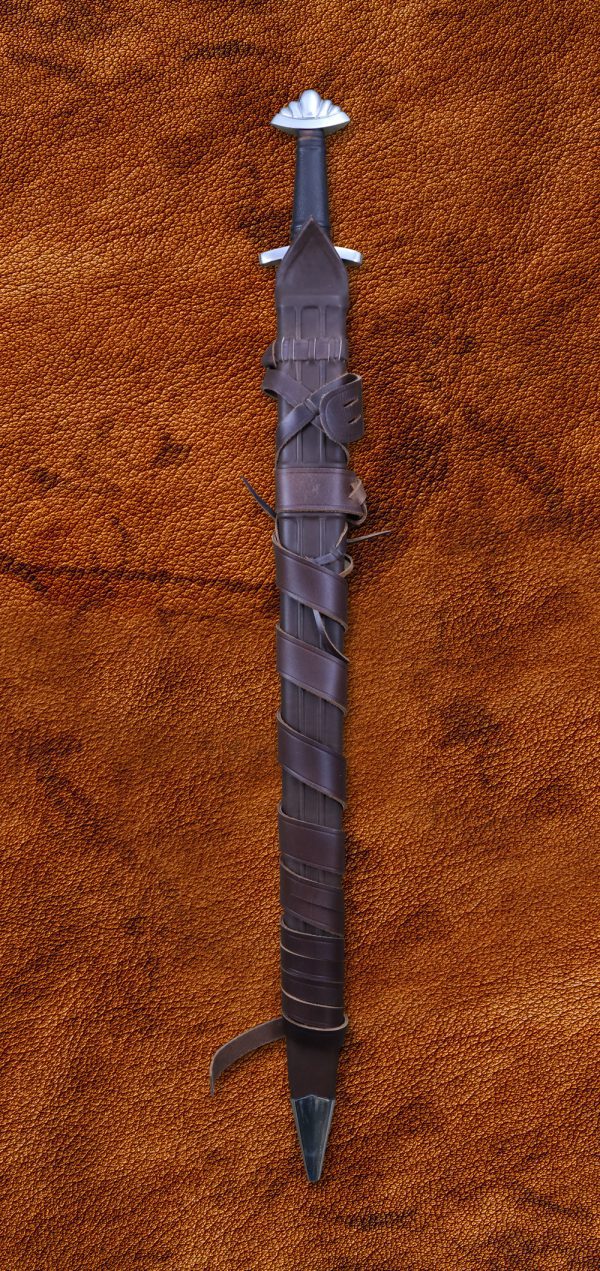
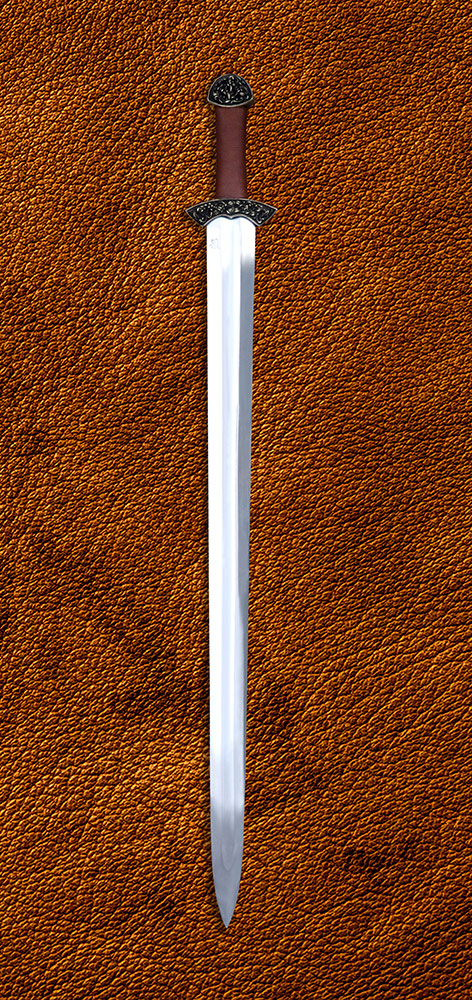
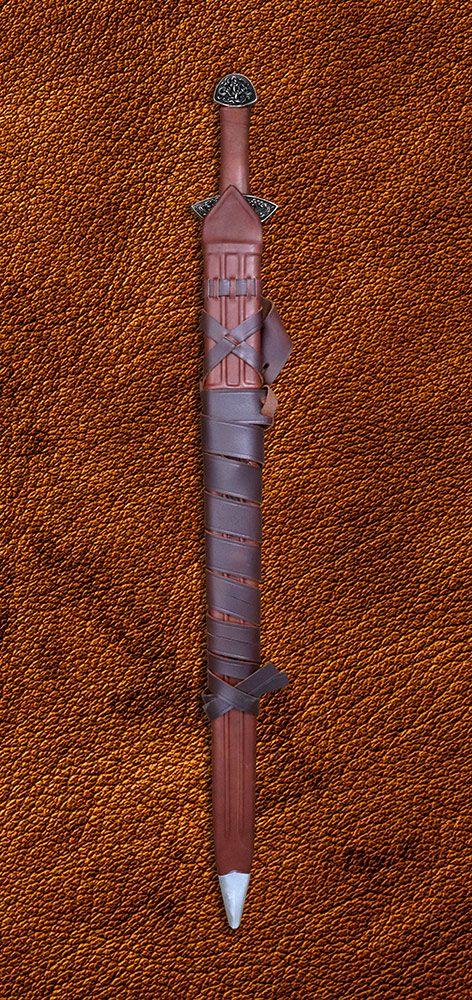
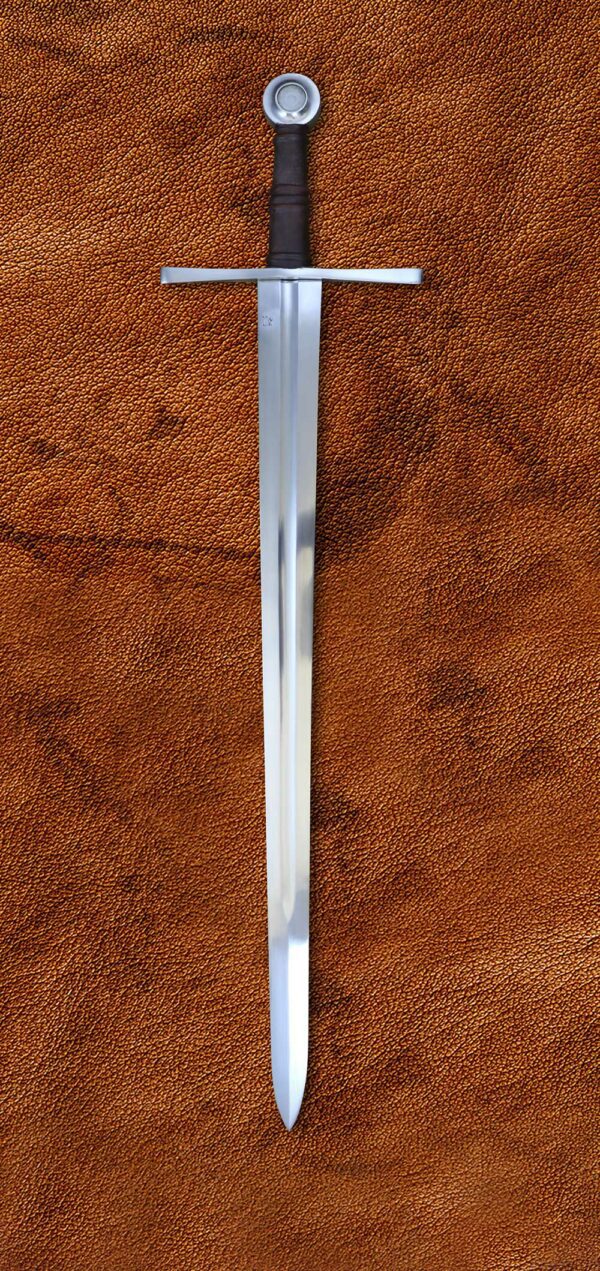
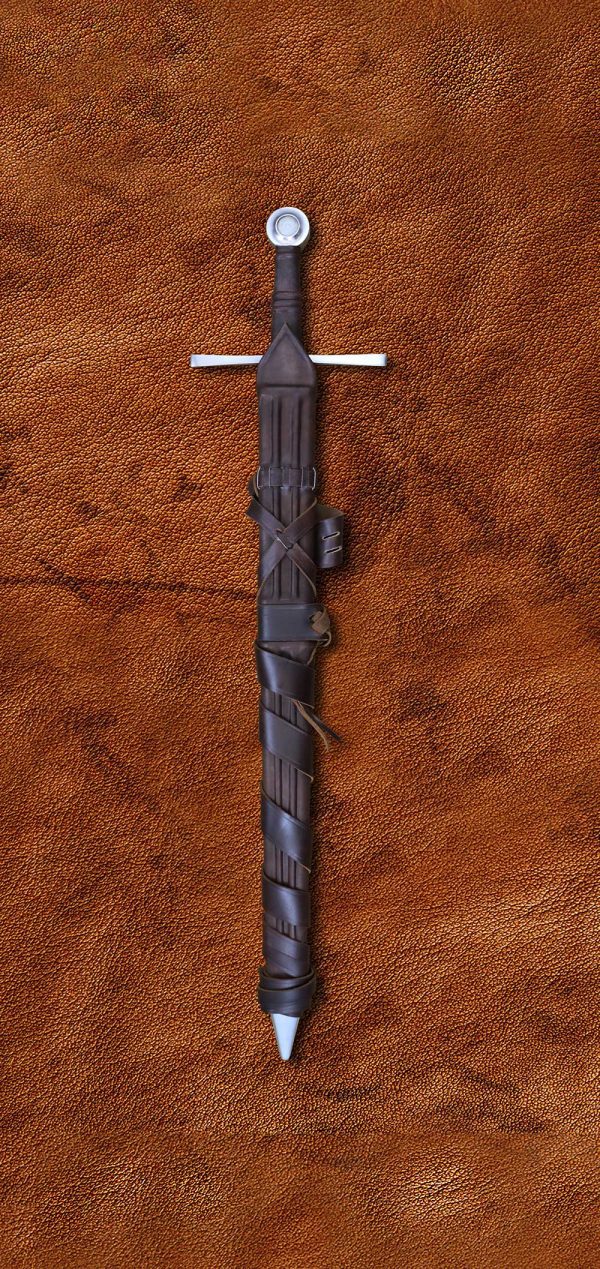
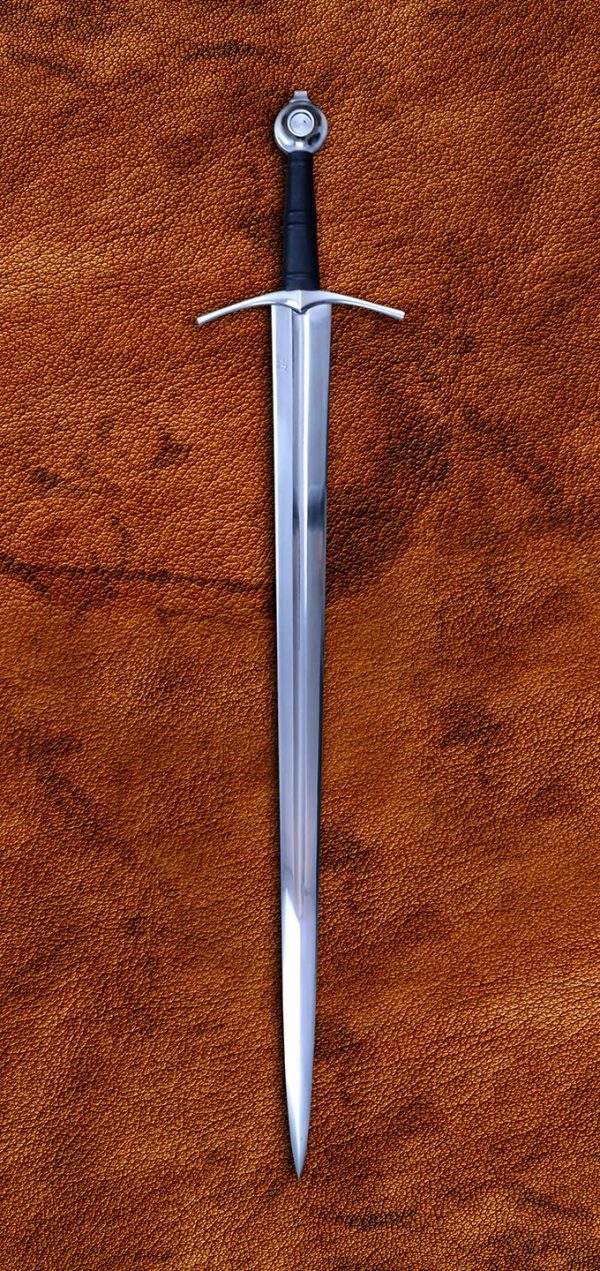
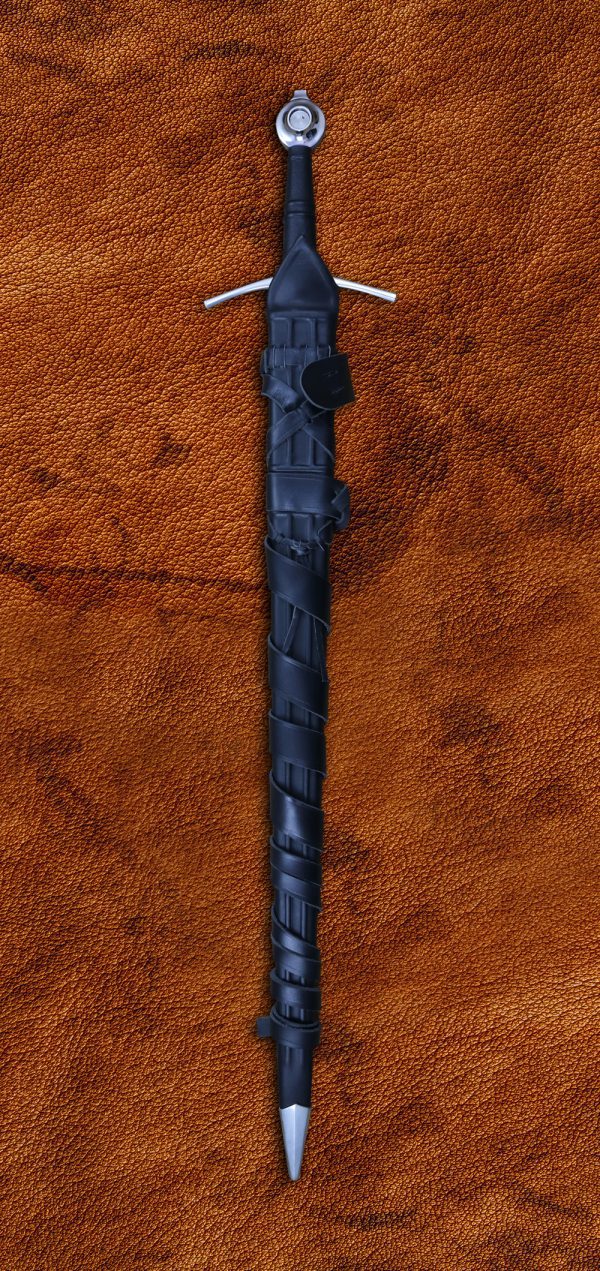
Sir Robin Steal (verified owner) –
This is the first fully functional sword I ever owned and have wanted one since I was quite young. Having said that this review is from a novice perspective although I have been into knife collecting awhile and into throwing knives(toss no spin style).
The pictures of the 1313 just don’t capture it’s aesthetic beauty as it is in real life. I did allot of on line browsing once i decided to finally own a quality battle ready sword.and for a first one all I can say is ‘Score”. Well actually i can say more and all very positive. The first thing I looked at after unwrapping the sword was at the tip. I wanted to see if the raised ridges on the front and rear of the blade match up to the point and angle of the edges. Absolutely spot on perfect. The pictures don’t show how much of a mirror like reflective surface the blade has. There still was some ‘protectant’ I guess it was that needed cleaning off and also the pommel and finger guard. All polished up nicely and as time goes along and it is cared for it will just get even better(with the correct polish and cloth). All the parts are solid on the sword no rattles, creaks, buzzes or grones at all. I ordered it with the blade sharpened and it is paper cutting sharp the whole length of the blade and on both edges even. The handle wrap and all of that is wrapped tightly and Gibraltar solid. I’ve shown it to friends and the ‘Wow Factor” is way up there. Lost of jaw hanging too. One day shipping was well worth the additional cost(I am on the West coast) and DSA had it shipped first thing in the morning(in FedEx’s hands not just a shipping label was created). For a first sword to own the 1313 has it all going on. As a sword to add to a collection ditto that. The dimensions are as mentioned in the video review. Can’t go wrong with this one IMHO.
Philip Cabrera –
Great sword and very beautiful. The only problem I have is with the guard, it’s very pointy and I keep jabbing my self with them. I’m tempted to file them down, not sure what to do.
Warren Harvey (verified owner) –
This was the latest DSA sword I’ve acquired, already having the Gothic 2 Handed Sword and my favourite, the Knightly Bastard Sword. My son has their Alexandria, also a lovely blade.
I’m very impressed with the Arming Sword, beautiful blade with a wonderful taper, just looks very nice. I was surprised that the blade is actually a titch longer then the blade of my knightly bastard sword, maybe .5/.75 inch or so and is a little heavy, or at least heavier then I expected. I have a number of rapiers and thought this would be lighter, but not so…
The blade is nimble and easy to control, though for some reason i keep wrapping my finger over the guard a la my rapiers which I don’t do with any of my longswords, maybe because it’s my first medieval 1 handed sword?? The finish is very bright and pleasing to the eye and as someone else mentioned, the quillons are very sharp and could definitely be used offensively! I’ve gotten all of my DSA swords with the simple scabbard and this one is as good as the others, snug and well made… my son did get the interlaced with his Alexandria and perhaps the next sword I’ll get will have the interlaced??
One thing that I have noticed is none of my swords have come super sharp, they cut, but I have had to sharpen them all a little more after receiving them to get them to the sharpness i prefer. My Albions, katanas and rapiers have all been sharper when I received them…
But all in all, i do love this sword and as my first 1 handed medieval sword I’m very happy again with DSA.